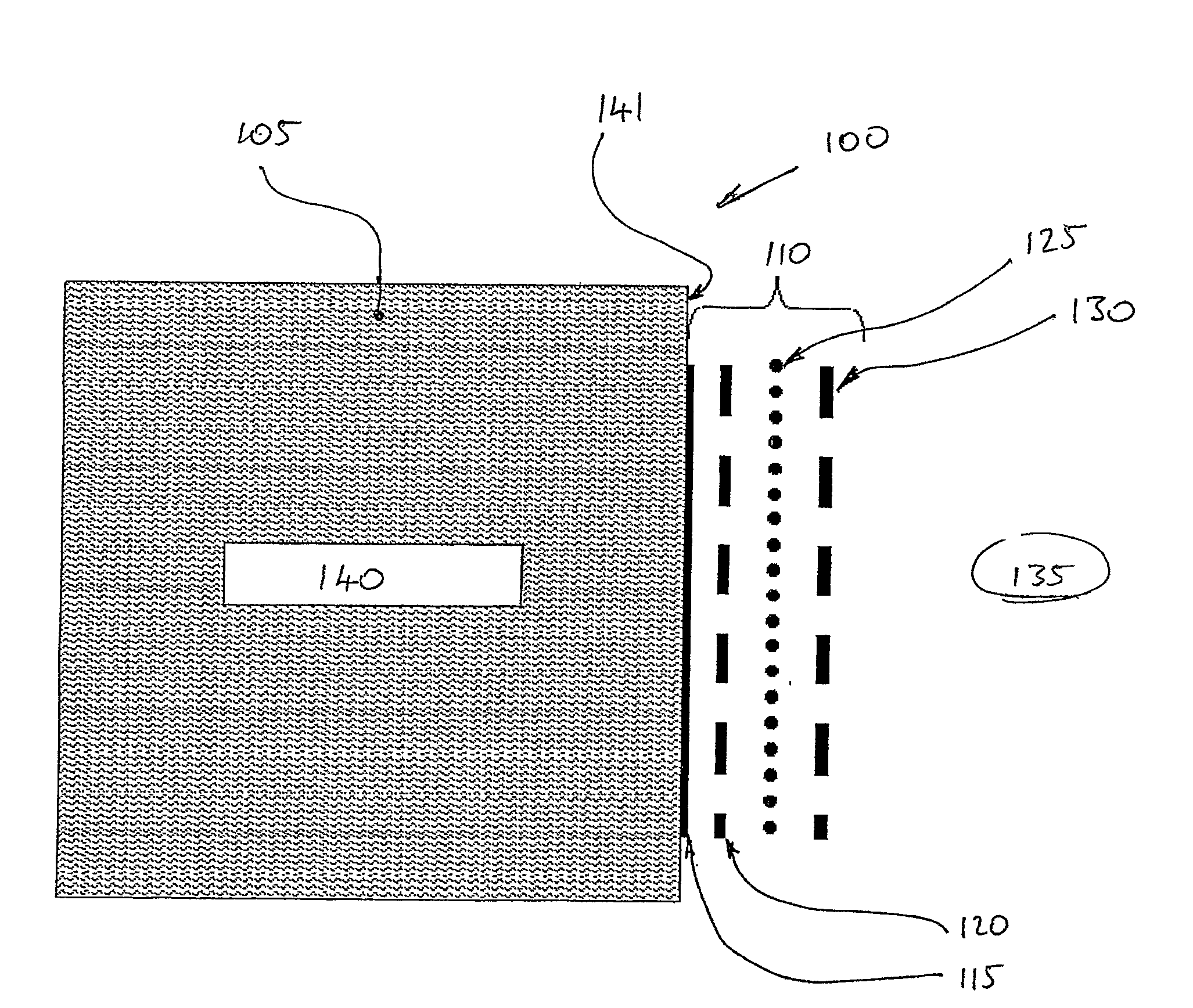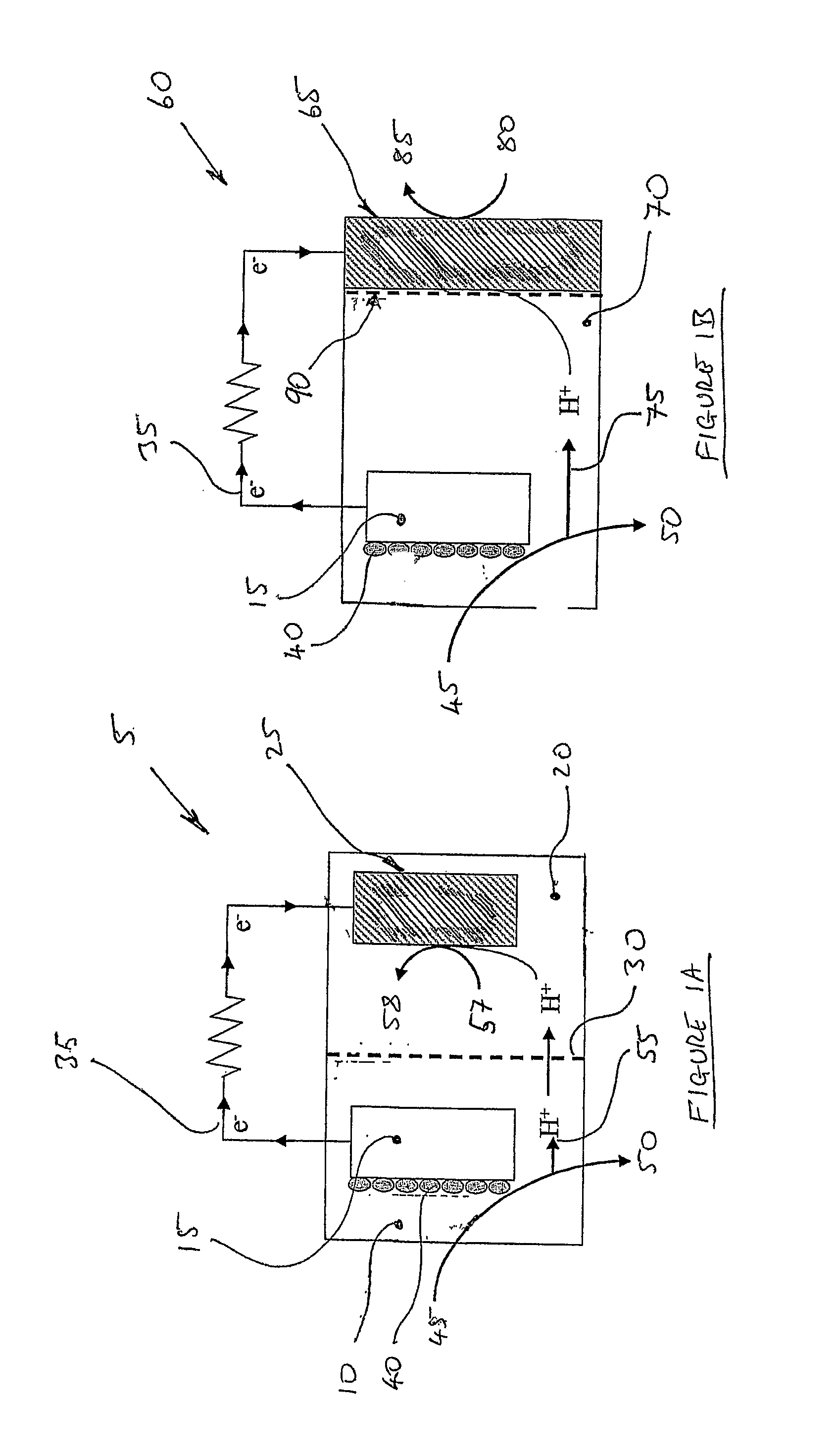Cathode design
- Summary
- Abstract
- Description
- Claims
- Application Information
AI Technical Summary
Benefits of technology
Problems solved by technology
Method used
Image
Examples
Embodiment Construction
FIGS. 1A and 1B show different microbial fuel cells (MFC) according to the prior art.
With respect to FIG. 1A, shown is a two chamber MFC 5 having an anode chamber 10 and cathode chamber 20. The anode chamber 10 is characterized by being anaerobic so as to prevent released electrons being consumed by oxygen feeding into the chamber 20. Within the chamber is a supply of biomass, such as wastewater, within the chamber 10. The organic material within the wastewater then forms a biofilm 40 on the anode 15 which on degradation of the influent / fuel 45 produces electrons. The anode 15 is connected to an external circuit 35 through which the consequential current flows to the cathode 25 within the cathode chamber 20. Thus, the fuel 45 supplied to the anode chamber 10 is oxidized 50 producing a flow of protons 55 through a proton exchange membrane (PEM) 30 whereby the protons combine with oxygen 57 within the cathode chamber 20 to form water 58.
FIG. 1B shows an alternative arrangement of an M...
PUM
 Login to View More
Login to View More Abstract
Description
Claims
Application Information
 Login to View More
Login to View More - R&D
- Intellectual Property
- Life Sciences
- Materials
- Tech Scout
- Unparalleled Data Quality
- Higher Quality Content
- 60% Fewer Hallucinations
Browse by: Latest US Patents, China's latest patents, Technical Efficacy Thesaurus, Application Domain, Technology Topic, Popular Technical Reports.
© 2025 PatSnap. All rights reserved.Legal|Privacy policy|Modern Slavery Act Transparency Statement|Sitemap|About US| Contact US: help@patsnap.com



